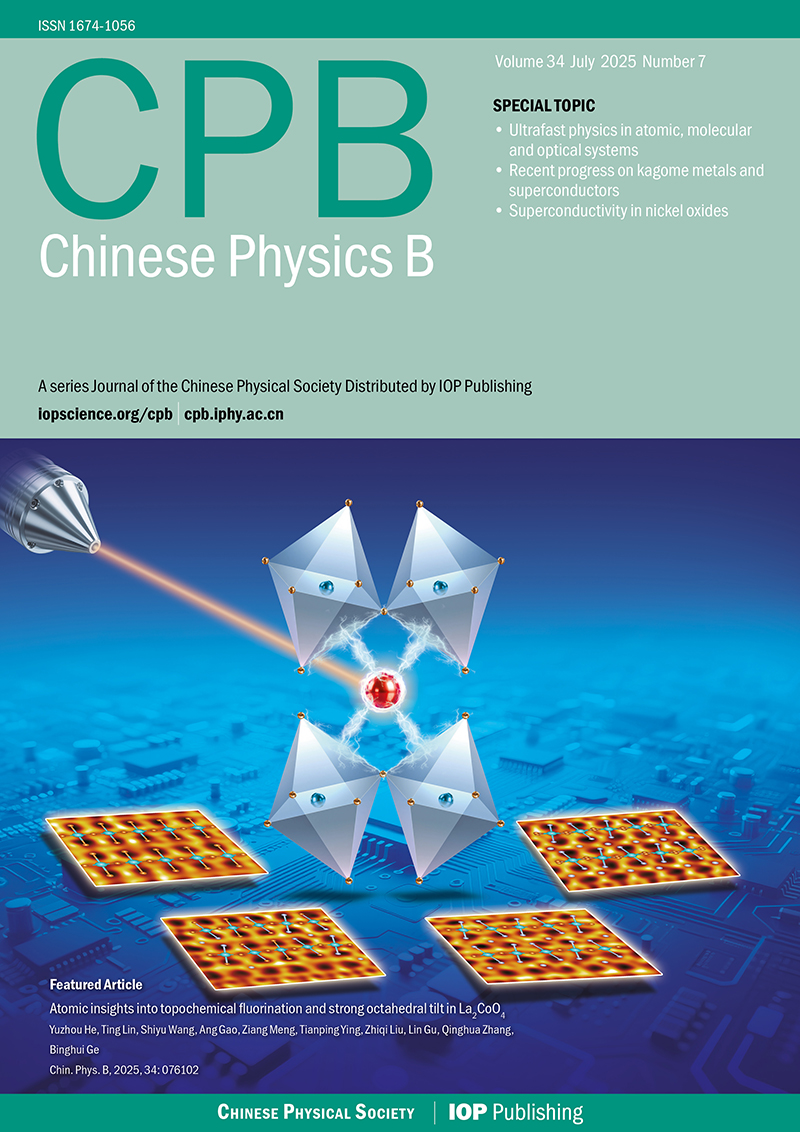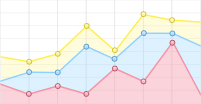|
Gutfleisch O, Willard MA, Brück E, Chen C H, Sankar S G and Liu J P 2011 Adv. Mater. 23 821
Google Scholar
Pub Med
|
|
Szmaja W, Grobelny J, Cichomski M, Hirosawa S and Shigemoto Y 2011 Acta Mater. 59 531
Google Scholar
Pub Med
|
|
Li Y, Fan X, Jia Z, Fan L, Ding G, Liu X, Guo S, Zheng B, Cao S, Chen R and Yan A 2024 Chin. Phys. B 33 037508
Google Scholar
Pub Med
|
|
Liu Z, He J and Ramanujan R V 2021 Mater. Des. 209 110004
Google Scholar
Pub Med
|
|
Mican S, Hirian R, Isnard O, Chicinaş I and Pop V 2015 Phys. Procedia 75 1314
Google Scholar
Pub Med
|
|
Hewei D, Chunxiang C, Wei Y and Jibing S 2017 J. Rare Earths 35 468
Google Scholar
Pub Med
|
|
Coey J M D 2020 J. Eng. 6 119
Google Scholar
Pub Med
|
|
Wang L, Quan Q, Zhang L, Hu X, Rehman S, Jiang Q, Du J and Zhong J 2018 Appl. Phys. 123 113904
Google Scholar
Pub Med
|
|
Yang Z, Chen Y, Liu W, Li Y, Cong L, Wu Q, Zhang H, Lu Q, Zhang D and Yue M 2023 Chin. Phys. B 32 047504
Google Scholar
Pub Med
|
|
Zeng X R, Sheng H C, Jin C X and Qian H X 2016 J. Magn. Magn. Mater. 401 1155
Google Scholar
Pub Med
|
|
Herbst J F 1991 Rev. Mod. Phys. 63 819
Google Scholar
Pub Med
|
|
Yang S, Liu X, Li S, Qin W, Song X, Lu M and Du Y 2003 J. Alloys Compd. 358 316
Google Scholar
Pub Med
|
|
Goll D and Kronmüller H 2000 Sci. Nat. 87 423
Google Scholar
Pub Med
|
|
Rong C and Shen B 2011 Chin. Phys. B 27 117502
Google Scholar
Pub Med
|
|
Kanekiyo H, Uehara M and Hirosawa S 1993 IEEE Tran. Magn. 29 2863
Google Scholar
Pub Med
|
|
Zhang W Y, Kharel P, Al-Omari I A, Shield J E and Sellmyer D J 2016 Phil. Mag. 96 2800
Google Scholar
Pub Med
|
|
Wang C Z, Liu L, Sun Y L, Zhao J T, Zhou B, Tu S S,Wang C G, Ding Y and Yan A R 2023 Chin. Phys. B 32 020704
Google Scholar
Pub Med
|
|
Alam M K, Han G B and Kang S S 2021 J. Magn. Magn. Mater. 517 167345
Google Scholar
Pub Med
|
|
Zhang W, Kazahari A, Yubuta K, Makino A, Wang Y, Umetsu R and Li Y 2014 J. Alloys Compd. 586 294
Google Scholar
Pub Med
|
|
Bao X, Gao X, Zhang M, Qiao Y, Guo X, Zhu J and Zhou S 2008 J. Uni. Sci. Tech. Beijing Mineral. Met. Mater. 15 753
Google Scholar
Pub Med
|
|
Withanawasam L, Zhang Y J and Hadjipanayis G C 1991 J. Appl. Phys. 70 6450
Google Scholar
Pub Med
|
|
Fan GJ, LöserW, Roth S, Eckert J and Schultz L 1991 Appl. Phys. Lett. 75 2984
Google Scholar
Pub Med
|
|
Herbst J F, Fuerst C D, Mishra R K, Murphy C B and Wingerden D J V 1991 J. Appl. Phys. 69 5823
Google Scholar
Pub Med
|
|
Munan Y, Shuwei Z, Yaojun L, Chunming W, Jiajie L and Bin Y 2018 Mater. Res. Express 6 026534
Google Scholar
Pub Med
|
|
Wang Z, Zhang M, Zhou S, Qiao Y andWang R 2000 J. Alloys Compd. 309 212
Google Scholar
Pub Med
|
|
Salazar D, Martín-Cid A, Madugundo R, Garitaonandia J S, Barandiaran J M and Hadjipanayis G C 2006 J. Appl. Phys D: Appl. Phys. 50 015305
Google Scholar
Pub Med
|
|
Yang B, Shen B G, Zhao T Y and Sun J R 2007 Mater. Sci. Eng: B 145 11
Google Scholar
Pub Med
|
|
Hirosawa S, Shigemoto Y, Miyoshi T and Kanekiyo H 2003 Scr. Mater. 48 839
Google Scholar
Pub Med
|
|
Hono K, Ping D H, Ohnuma M and Onodera H 1991 Acta Mater. 47 997
Google Scholar
Pub Med
|
|
Ping D H, Hono K, Kanekiyo H and Hirosawa S 1991 Acta Mater. 47 4641
Google Scholar
Pub Med
|
|
Patterson A L 1939 Phys. Rev. 56 978
Google Scholar
Pub Med
|
|
Suárez G M, Garcıa J I E, Cuevas J L, Gutiérrez G V, Molinar H M and Nonell J M 1999 J. Magn. Magn. Mater. 206 37
Google Scholar
Pub Med
|
|
Hirosawa S, Kanekiyo H, Shigemoto Y, Murakami K, Miyoshi T and Shioya Y 2002 J. Magn. Magn. Mater. 239 424
Google Scholar
Pub Med
|
|
Wang Z, Zhou S, Zhang M, Qiao Y and Wang R 1999 J. Appl. Phys. 86 7010
Google Scholar
Pub Med
|
|
Li A H, Chiu C H, Chnag H W, Chang W C and Li W 2007 J. Alloys Compd. 437 197
Google Scholar
Pub Med
|
|
Alam M K, Raza S, Han G B and Kang S S 2023 Phys. Status Solidi (a) 220 2200656
Google Scholar
Pub Med
|
|
Wang L, Wang J, Rong M, Rao G and Zhou H 2018 J. Rare Earths 36 1179
Google Scholar
Pub Med
|
|
Poenaru I, Lixandru A, Riegg S, Fayyazi B, Taubel A, Güth K, Gauß R and Gutfleisch O 2019 J. Magn. Magn. Mater. 478 198
Google Scholar
Pub Med
|
|
Alam M K, Han G B and Kang S S 2020 Rare Metals 39 41
Google Scholar
Pub Med
|
|
Herbst J F, Fuerst C D, Mishra R K, Murphy C B and Wingerden D J V 1991 J. Appl. Phys. 69 5823
Google Scholar
Pub Med
|
|
Goll D, Seeger M and Kronmüller H 1998 J. Magn. Magn. Mater. 185 49
Google Scholar
Pub Med
|
|
Panagiotopoulos I, Withanawasam L and Hadjipanayis G C 1996 J. Magn. Magn. Mater. 152 353
Google Scholar
Pub Med
|
|
Alam M K, Raza S, Han G B and Kang 2024 Phys. Status Solidi (a) 221 2300626
Google Scholar
Pub Med
|
|
Zhang Y, Li W, Li H and Zhang X 2013 J. Phys. D: Appl. Phys. 47 015002
Google Scholar
Pub Med
|

 首页
首页 登录
登录 注册
注册






 DownLoad:
DownLoad: